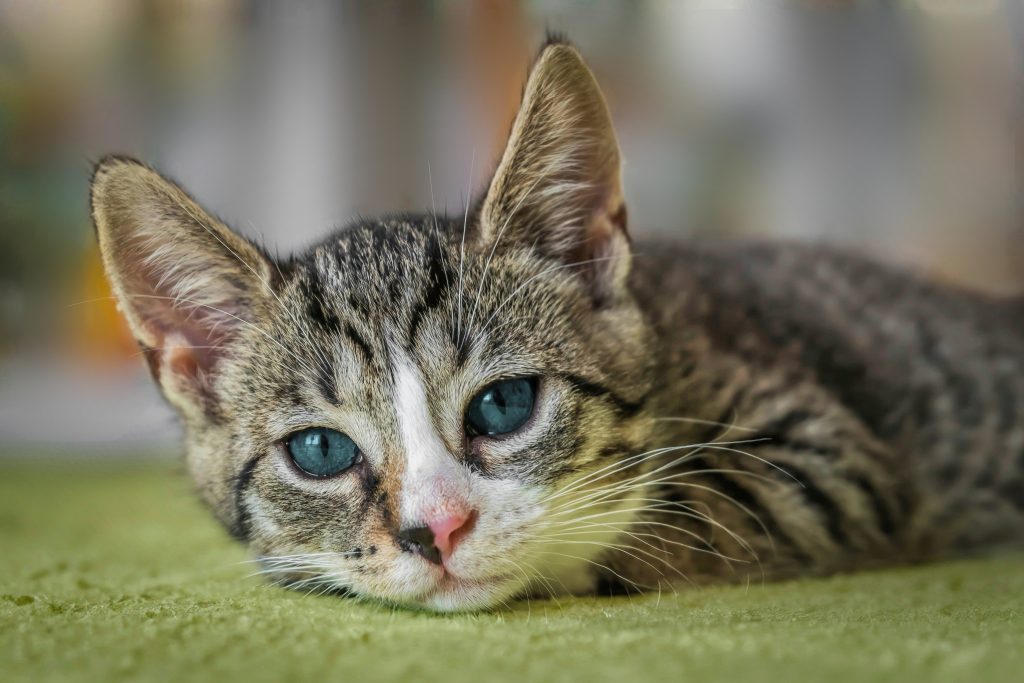Anemia in cats refers to a condition where red blood cells are deficient (RBCs) or hemoglobin in the blood, leading to reduced oxygen delivery to tissues throughout the body. This can result in various clinical signs and can be caused by a wide range of underlying factors. Understanding anemia in cats involves recognizing its symptoms, understanding its potential causes, and pursuing appropriate veterinary care to address the condition effectively.
Anemia in cats can be caused by several factors, including blood loss (such as from trauma or parasites like fleas), decreased production of RBCs (due to bone marrow disorders or nutritional deficiencies), or increased destruction of RBCs (due to immune-mediated diseases or certain infections).
Symptoms of Anemia In Cats
Anemia in cats can manifest through various symptoms, depending on the severity and underlying cause. Recognizing these signs early can prompt timely veterinary intervention. Here are common symptoms of anemia in cats:
- Pale Gums: One of the most noticeable signs is pale or even white gums. Normally, a cat’s gums should be pink, and paleness indicates reduced blood flow and oxygenation.
- Lethargy: Cats with anemia often appear unusually tired or lethargic. They may sleep more than usual and have reduced interest in activities.
- Weakness: Anemic cats may exhibit weakness, particularly noticeable in their hind legs. They may be reluctant to jump or climb as usual.
- Decreased Appetite: Loss of appetite or reduced interest in food is common in anemic cats. They may eat less or show disinterest in their favorite treats.
- Weight Loss: Anemia can lead to weight loss despite a normal or reduced appetite. This is due to the body’s increased energy expenditure as it tries to compensate for reduced oxygen levels.
Treatment Advice
Treating anemia in cats involves identifying and addressing the underlying cause, as well as supportive measures to stabilize and improve their condition. Here’s a comprehensive approach to treating anemia in cats:
- Balanced Diet: Ensure your cat is eating a high-quality, balanced diet that meets their nutritional needs. Your veterinarian may recommend a specific diet tailored to support recovery from anemia.
- Monitoring and Follow-up:Regular Veterinary Check-ups: Monitor your cat’s progress closely with follow-up visits to your veterinarian. Blood tests may be repeated to assess response to treatment and adjust the treatment plan as needed.
- Home Care:Provide a Quiet, Stress-Free Environment: Minimize stress for your cat during recovery, as stress can negatively impact their health and recovery.
- Administer Medications as Directed: Follow your veterinarian’s instructions carefully regarding medication administration and schedule.
Preventative Measures
Prevention is better than cure. Here are some ways you can ensure good health for your furry friend.
Supportive Care:
In severe cases of anemia where the cat’s red blood cell count is dangerously low, a blood transfusion may be necessary to quickly restore oxygen-carrying capacity. This is typically done in a veterinary hospital setting.
Your veterinarian may prescribe medications such as corticosteroids to suppress inflammation (if immune-mediated hemolytic anemia is suspected), antibiotics for infections, or erythropoietin (EPO) to stimulate red blood cell production.
Dietary Management:
- Nutritional Supplements: If anemia is related to nutritional deficiencies, your vet may recommend supplements such as iron, vitamin B12, or folic acid to support red blood cell production.
- Balanced Diet: Ensure your cat is eating a high-quality, balanced diet that meets their nutritional needs. Your veterinarian may recommend a specific diet tailored to support recovery from anemia.
Parasite Control:
Keep your cat up-to-date on flea prevention and deworming medications to reduce the risk of blood loss due to parasites.
Regular Veterinary Care:
Schedule routine veterinary check-ups to detect and treat underlying health issues early, before they progress to anemia.
Conclusion
Just like humans, cats can also have anemia. In cats, anemia can only be discovered through thorough testing and observation as they are subtle. Your veterinarian may be able to give you a thorough diagnosis and rule out other potential causes of the symptoms. Your veterinarian may recommend different tests to give them a better understanding of the condition. Treating anemia in cats requires a tailored approach based on the underlying cause and the cat’s individual health status. By working closely with your veterinarian and following their recommendations, you can help manage and improve your cat’s condition effectively. Early intervention is key to achieving a successful outcome and restoring your cat’s health and well-being.




 Expert advice on healthcare, nutrition, behavior and all your pet needs!
Expert advice on healthcare, nutrition, behavior and all your pet needs! 







